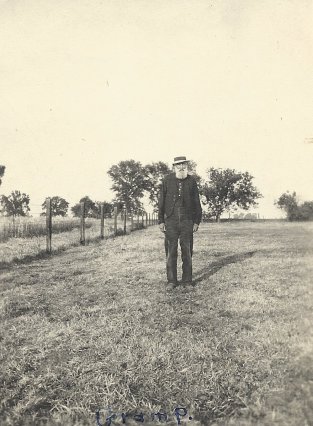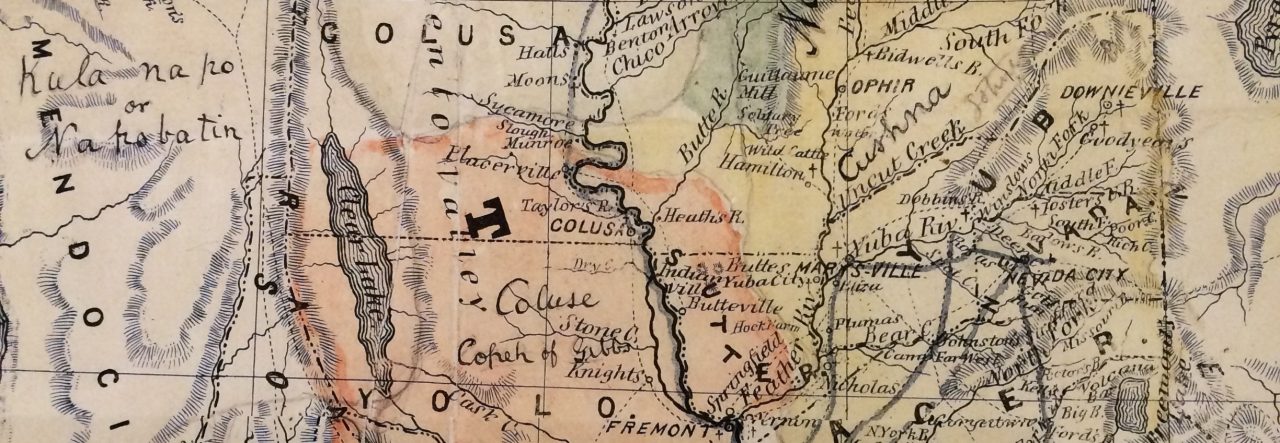Most of the information that follows is taken from Lloyd K. Hoffman’s research which he compiled in a document entitled The Hoffman Family: Two Hundred Years in America, housed at Shepherd University in Shepherdstown, WV. According to this document, the Hoffmans and Newcomers arrived in Germantown (Philadelphia) around the same time, in the 1720s and ‘30s, and intermarried.
When I first started researching the Hoffmans (my mother’s father’s family) I began encountering the name Newcomer—initially as a middle name. My mother had an uncle christened Worthington Newcomer Hoffman. I developed an instant fondness for this delicious mouthful of a name. (In Colusa County he was just “Uncle Worth.”) As a newbie genealogist I was puzzled by the possible origin of this name, Newcomer. Focused as I was on the migration of my family into California, I wondered, did the name Newcomer somehow relate to their recent arrival in California? Turns out my instincts were correct about the name being connected to being new arrivals. I was just a continent and a few centuries off in the particulars.
According to Lloyd Hoffman, our Newcomer ancestors spent many years fleeing religious persecution and wars in Europe prior to emigrating to America. They apparently were part of the Waldensians, a pre-reformation religious movement originating in Lyons, France early in the 14th century and led by Peter Waldo (or Waldes or Valdes). The Roman Catholics were eager to wipe out this hotbed of controversy with various persecutions and wars that went on for centuries. Many Waldensians left Southern France for the northern valleys of France and Germany, and by the 1500s many were hiding in the Cottian Alps, which border on Switzerland. Apparently my early ancestors left France and their French name (probably for security reasons), adopting Nei Comers, or New Comers, when they landed in Switzerland. Peter Newcomer was the first of my branch of Newcomers to emigrate, coming from Switzerland in 1720, and landing in Germantown (Philadelphia).
My Hoffman ancestors were, as I suspected, immigrants from Germany. As to the Hoffman name, a hoff refers to a settlement, farm or house, so Hoffman refers to a man who either owned his own house or farm or was a steward of a settlement or farm. Peter Von Hoffman is named as an early ancestor whose family was originally from the Old Grand Duchy of Baden, a German state and a historical territory of the Holy Roman Empire. Prior to emigrating to America this branch of the family had moved further down the Rhine Valley to a part of Germany very near the Holland border, where the Reformed faith was embraced. Many inhabitants of the Upper Rhenish states left their homes and farms after the Protestant Reformation and the 30 years of war that followed (the 30 Years War ended in 1648), and my ancestors appear to have been among them.
Prior to emigrating to the American colonies, the Newcomers and Hoffmans had been slowly moving and relocating through parts of Europe, crossing mountains and crossing borders. For generations and through centuries, they sought to escape the ever-exploding violence of the religious conflicts that made peaceful living impossible. The 16 week sail from Rotterdam to Germantown, Pennsylvania was only one of the more recent in a long list of moves made by the Hoffman and Newcomer clans. Apparently, the German families tended to send a family member off to a potential new region to check on conditions, and if they were favorable many more family members followed.
Adam Hoffman, from whom I am descended, was the first of three brothers to emigrate to America. He sailed from Rotterdam, Holland on the ship Winter Galley in 1737. When he arrived in Germantown in the early days of 1738, he was 23-years-old. It was a full decade (1747) before the second brother, Michael arrived, also in Germantown. A third brother, Robert, followed two years later in 1749. Adam and Michael settled in Pennsylvania and raised large families. It was Robert who led a group of his nieces and nephews from Pennsylvania to Maryland and Virginia where many of them settled, including one of Adam’s sons, John Hoffman. (This is in conflict with my understanding that John Hoffman was born in Virginia—I now believe he was born in Pennsylvania but moved with other family members to the Shepherdstown, WV area.) John Hoffman married Sallie Newcomer, the great-granddaughter of the above-mentioned Peter Newcomer. John and Sallie are my 4th great-grandparents. The Newcomer name was handed down to my 2nd great-grandfather (the one who came west to California, landing in Sutter County) Samuel Newcomer Hoffman, and on to one of his three sons, the afore-mentioned Worthington Newcomer Hoffman.

I spent some time researching the Waldensians and pre-reformation history. It is complicated and there is much conflicting information, not surprising when religious claims are involved. But what I do know is both the Hoffman and Newcomer branches of my family were part of the reformation movement centuries before what we know as “the Reformation,” as initiated by Martin Luther (his 95 Theses was published in 1517). The early branches of these families in America were Mennonites and Dunkards. In Shepherdstown, WV, they were members of the Reformed Church.
They came to America to be able to escape religious persecution, and in this they were successful. They did not find freedom from war, however. For the next 150 years they and their descendants endured the French and Indian War (1754-1763), the Revolutionary War (1775-1783), the War of 1812 (1812-1815), and, most devastatingly, the Civil War (1861-1865).

Holly, what was your ancestors’ French name that they discarded? XXX Yvonne
LikeLike
I sure wish I knew but I have not come across that information.
LikeLike
I tried to comment, wordpress didn’t recognize my password and then made it impossible for me to get a new one. So there!
MY comment was: Gramps looks like he hasn’t had much experience with being photographed!
>
LikeLike
Probably not, but he was outstanding in his field (har har).
LikeLike
Wow! That is an amazing history. I needed to read through it twice and I think I will need to draw a diagram to figure all that out. You have done such a great job and I love reading it. It is history with meaning and purpose. 🙂
LikeLike
I think I need to start posting some portions of the family tree to make it more clear. I’ll send you an invite to view the family tree on ancestry, anyway.
LikeLike
16 weeks on a ship in 1737 is unimaginable. I was just thinking-I guess they had to bring a 16 week water supply, which would probably require extreme conservation. The smells must have been terrible!
LikeLike